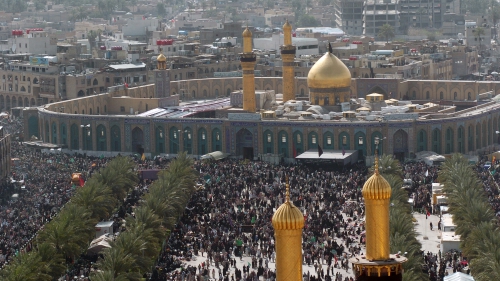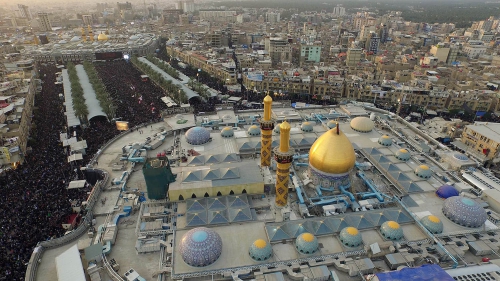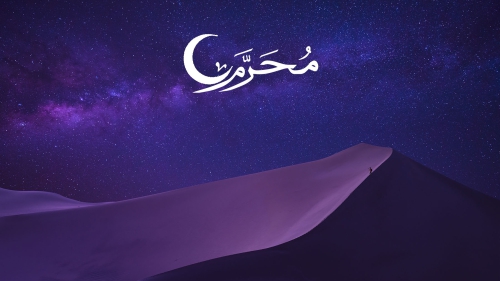14 Facts About Sunni and Shia Islam

The tension in the Middle East, particularly between Saudi Arabia and Iran, and the long civil wars in Yemen and Syria have raised questions on the true nature of Islamic faith and its two main denominations Sunni and Shia. The majority of Muslims are Sunni Muslims (hereafter just Sunni); however, Shia Muslims (hereafter just Shia) are a large minority throughout Islamic world. Shia can be found from South Asia to West Africa, north to the south, and even among minority Muslims communities in western countries. Is there a clear way to distinguish between Sunni and Shia? Have these two been in constant conflict throughout history? Is there an unbridgeable gap? What are the facts and what is fiction? This paper separates fact and fiction.
- The separation of Sunni and Shia is as old as Islam.
Islam split into two divisions right after the Prophet Muhammad’s death in 632. Later on, these two groups came to be known as Shia and Sunni. Sunni means the individual or a group who follows the path and tradition of the Prophet. It’s rooted in the word Sunnah meaning tradition. The word Shia refers to an individual or a group who follows the path of Ali, the son-in-law of the Prophet and his fourth caliph. The word came from sh/y/a, which means following. Shia goes to the Prophet through Ali. The relationship between Sunni and Shia across the Islamic history is very complex. It has shifted from love to hate and from overlap to separation; culture and politics have also influenced the relationship. Throughout history these two groups recognized each other as equally Muslim and showed each other respect. Excommunication, of one group by the other, was exceptional. - They suggest two interpretations of the same faith.
Sunni and Shia believe in the same God; recite the same holy book, The Quran; confess belief in the same Prophet, Muhammad; understand Judgment/Resurrection Day in the same way; and pray to the same direction, facing Mecca. Both practice the same Five Pillars of Islam: confessing the Oneness of God and the Prophecy of Muhammad (Shahadah), Five daily prayers (Salat), Fasting (Sawm), Almsgiving (Zakat), and Pilgrimage to Mecca (Hajj). Yes, neither included Jihad as one of the five pillars of Islam. It would take pages to list all the things these two have in common, but the list of fundamental differences has only two points. First, Sunni believes that the Prophet did not appoint anybody as his political successor, leaving the issue to the community, while Shia believes that the Prophet declared Ali ibn Abi Talib to be his successor. Second, Sunni tends to order religious society in an egalitarian way while Shia tends to a hierarchical view. This is analogous to the egalitarian Protestants and hierarchical Catholics, who place the pope atop the religious hierarchy. These two fundamental distinctions have evolved throughout Islamic history. Today, the diversities within both Shia and Sunni are so great that you can find a Sunni nearly indistinguishable from a Shia, and vice-versa, and radical Shia and Sunni who are more similar to each other than they are to others of their own denomination. - Sunni and Shia have lived together throughout Islamic history.
Today, it may seem that the two groups live in geographically distinct places, the two groups have lived together from the beginning of Islam. While the majority of Muslims in the Middle East (specifically the Arab countries) are Sunni, there has always been Shia living in those lands. Similarly, there have always been Sunni living in predominately Shia lands, as is the case with the current Saudi Arabia and Iran. - Sunni and Shia have been in theological dialogue from the beginning.
There are many historical debates between theologians of both groups. Sunni and Shia study each other’s theologians and scholars and many are important for both Sunni and Shia. Some theologians and scholars rejected by their own denominations find a home in the other denomination. Some figures are claimed to be both Sunni and Shia. Finally, some figures are rejected as heterodox by both Sunni and Shia. - Ali is respected by both denominations.
Ali ibn Abi Talib (601-661), whose relationship to the Prophet is one of the two central points of contention between Sunni and Shia, is greatly venerated by both Sunni and Shia. Both recognize him to be the cousin, son-in-law, and companion of the Prophet. While Shia consider him to be the first infallible Imam, Sunni recognize him as one of the four Righteous Caliphs. Both recognize him as the fourth caliph, the political leader of Muslims. During his years as caliph there were three civil wars; however, none of them are recognized as sectarian. - Sunni and Shia both venerate Ashura and Hussain.
Hussain (626-680), the son of Ali, was the grandson of the Prophet. Alongside his companions he was killed brutally in Karbala, Iraq. The day he was killed is called Ashura. Shia specially celebrate this day, though their Sunni neighbors often join them. Even the Taliban, radical Sunni group in Afghanistan, officially used to celebrate Ashura during their rule. All Muslims highly respect and esteem Hussain for both his own virtues and his kinship to the Prophet. Muslims use Hussain’s particular status and death. Despite the use of Hussein by Islamists, no historian has claimed that Hussain’s battle was Sunni-Shia conflict. - The Mahdi is not a merely the Shia messiah.
It is an Islamic concept referring to the end of the world. Mahdi is a title given by the Prophet to the promised individual who will revive faith, bring justice, and lead the world to peace. Shia waits for his coming but Sunni puts the idea into a broader context. Many Sunni Muslims have claimed to be the Mahdi, the promised one. Recent examples include Muhammad Mahdi of Sudan (1844-1885) and Mirza Ghulam Ahmad (1835-1908), the founder of Ahmadiyyah community in India and Pakistan. - Respect for the Family and Companions of the Prophet.
Both Sunni and Shia respect the family and the companions of the Prophet; although, Shia puts the family first and criticize some companions. Both groups recognize Abu Bakr ibn Abi Qahafah (573-632), Umar ibn al-Khattab (584-644), Uthman ibn Affan (577-565) and Ali ibn Abi Talib followed each other as caliphs. All were virtuous Muhajeers (the companions who emigrated with the Prophet from Mecca to Medina) who sacrificed greatly to spread the word of Islam. However, Shia suggests that Ali has a special spiritual position and status. - Intra-faith marriage is not prohibited.
Neither Sunni and Shia Sharia (law) recognizes denomination to be an impediment to marriage. Concerning the different schools of Islamic law, some scholars, including the prominent Mufti of al-Azhar, Egypt, Mahmoud Shaltut (1893-1963), declared that the four schools of jurisprudence in Sunni and Jafari, the Shia school of jurisprudence, are equally authorized and religiously valid to follow in all religious practices. - The politics of the 19th century made faith politicized.
Imperialism, especially British, French, and Ottoman, inhibited the development of competent and efficient form of government. Over the course of the 20th century, many Islamic countries have come to be led by centralized, authoritarian, governments. Modernity and modern development entered the Middle East through the military and politics. The relationship between politics and Islam made this challenging. The current conflict between Saudi Arabia and Iran is wrongly considered to be a conflict between Sunni and Shia. Instead, it is a conflict between two governments who, respectively, abuse Sunni and Shia Islam for their own political agendas. They both ideologize faith. Thanks to oil and politics, they have created and continue to fuel a region-wide sectarian conflict. Both states use regional groups of the other denomination to further their political goals. - They have diversity within each denomination.
Neither Sunni nor Shia is reducible to a single and fixed ideology. Narratives that treat either Sunni or Shia as if they are a single entity are misleading and wrong. There have been and still exists great diversity within each group. There are rationalists and literalists within both Sunni and Shia Islam. This is equally true concerning mysticism, Shariah (Islamic religious law), and politics. Some Sunni groups look more like Shia. Often Shia are very similar to the Mu’tazila (the first theological and Sunni school in Islam that incorporated reason in theology). The same is true regarding some Shia, like the Zaidiyyah of Yemen who are close to Sunni. Various groups of Shia initially were categorized based on the number of imams they followed. Sunni groups based on their theological and jurisprudential schools. Plus, there are Muslim minorities, like the Alawis of Syria, Alevis of Turkey, and Abadis of Oman, who fit into neither Sunni nor Shia orthodoxy. - Sufis and Islamic philosophers have made important contributions to human civilization. Sufis, like Rumi (1207-1273) and Ibn Arabi (1165-1240), promote the internal and mystical aspect of Islam. Falasifa (Muslim Philosophers), like al-Farabi (872-950), Avicenna (980-1037) and Averroes (1126-1198), contributed a very rational understanding of Islam. In general, they consider themselves above both denominations and tried to unite rather than divide the denominations. Both Sufis and Falasifa introduced several great ideas including mystical love, rational faith, dialogue among civilizations, and metaphysical developments to humanity.
- There has always been a call for union and solidarity from both sides.
The division between the two main denominations occurred early on; however, the distinction often remained in theology and theory, not in community and practice. For example, Salam al-Farsi (568-656) and Ammar bin Yasir (570-657), two earliest devotees of Ali ibn Abi Talib and archetypes of Shia worked in the upper ranks of the administration of Umar ibn al-Khattab, the second caliph of Islam. Even Imam Abu Hanifa (699-767), the founder of largest school of jurisprudence in Sunni Islam, Hanafi, was a disciple of Imam Jafar Sadiq (702-265), the sixth Shia Imam. Particularly in modern times, the two denominations supported each other in the fight against foreign invader and colonialism, and in the quest for independence. The grand Ayatollah Sistani (193--?), in Iraq, suggests calling Sunni as the other “self” of Shia rather than their “brother.” - Moderate Sunni and Shia have the majority, though they do not speak loudly.
The very minority of Wahhabi from Riyadh, Saudi Arabia, claim to speak on behalf of all Sunni, and the Iranian government in Tehran claim to speak for all Shia. Whereas, the moderate and traditional view can be heard from Cairo of Egypt and Najaf of Iraq, respectively in Sunni and Shia.
Thus, Sunni and Shia are not so away from each other or in conflict the way media broadcasts, articles, and podcasts suggest. Today, Sunni and Shia can learn a lot from each other on the true and challenging nature of their faith. Dialogue between these denominations contributes both egalitarian and hierarchical aspects of Islam. There are many centers in Middle East that promote inter-faith dialogue, but Muslims really need the honest and serious intra-faith dialogue.
Professor Sayed Hassan Akhlaq is involved in inter and intra-faith dialogue, comparative study, and dialogue among civilizations. Dr. Akhlaq published five books (in Iran and Afghanistan), written in Farsi. He is affiliated with Princeton University, Boston University, Catholic University of America, and George Washington University. He published several op-eds in HuffingtonPost and OpenDemocracy websites.
Topics: Ali Ibn Abi Talib, Ashura, History, Intrafaith, Muhammad Al-Mahdi, Rightly Guided Caliphs, Shia-Sunni Relations Values: Trustworthiness
Views: 41141
Related Suggestions

















